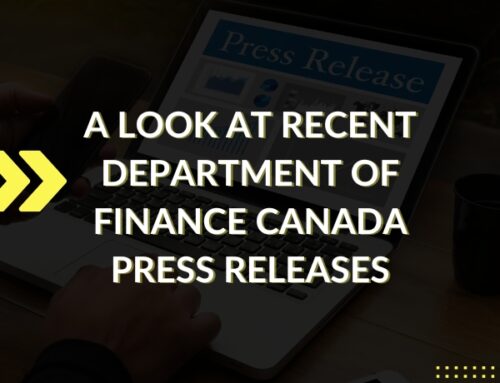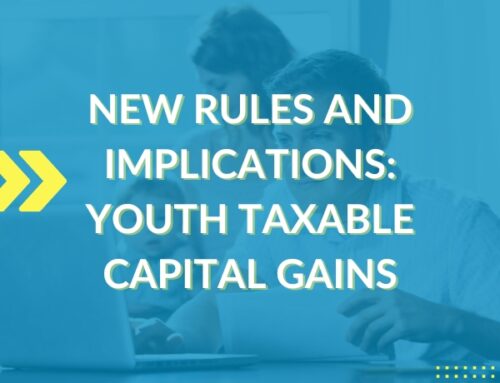Written by
One of the largest and longest standing Canadian business funding programs offered by the Federal Government is a research & development tax credit program called Scientific Research and Experimental Development (SR&ED). This federal R&D funding program has been so successful, most provinces and territories have created their own version of this program that can be stacked with tax credits from the federal SR&ED program.
Ontario businesses that receive funding through the federal SR&ED program may be eligible to receive additional tax credits for the same R&D project through the three provincial SR&ED programs.
With Ontario being such a large hub for Canadian business innovation, the Provincial Government has created three different variants of the SR&ED program that provide various amounts of tax credits depending on the eligibility of your business’ project.
Ontario’s three provincial SR&ED variants are as follows:
- Ontario Innovation Tax Credit (OITC);
- Ontario Business-Research Institute Tax Credit (OBRITC); and
- Ontario Research and Development Tax Credit (ORDTC).
This article will cover how each of these tax credit programs differ from each other.
Program Snapshot: Ontario Innovation Tax Credit (OITC)
Businesses that apply for the Ontario Innovation Tax Credit (OITC) should be conducting internal R&D projects carried out within Ontario that results in them making incremental improvements to their new or existing products, processes, or services.
Amount of Funding
Eligible businesses may be entitled to receive OITC funding with the following criteria:
- Receive up to 8% refundable tax credits on a maximum annual expenditure limit of $3 million.
- The maximum tax credit amount is $240,000.
- The expenditure limit is gradually reduced if:
- Taxable income of the prior tax year exceeds $500,000 and is eliminated at $800,000; or
- The prior year’s taxable paid-up capital exceeds $25 million and is eliminated at $50 million.
- NOTE: OITC is considered government assistance and will reduce the federal pool of deductible SR&ED expenditures and qualified SR&ED expenditures.
Eligible Applicants
The OITC tax credit is only applicable to corporations that have a permanent establishment in Ontario.
Eligible Expenditures
As this tax credit program is retroactive, costs already incurred can be reimbursed for tax credits that can reduce your business’s tax liability.
- Labour: Based on time spent on eligible activities in Ontario.
- Contractors: Portion of contract related to SR&ED performed on the business’ behalf. Must be a Canadian contractor and work must be performed within the province of Ontario.
- Third Party Payments: Payments (money or in-kind) to an entity to carry on SR&ED in Canada.
- Materials: Materials can be purchased from outside Ontario but must be used in the prosecution of SR&ED in Ontario.
- Overhead: Calculated using the Proxy or Traditional method.
Program Timelines
This program is available for all open tax years, contingent on filing a federal SR&ED claim within 18 months of year end.
Program Snapshot: Ontario Business-Research Institute Tax Credit (OBRITC)
Businesses that can apply for the Ontario Business-Research Institute Tax Credit (OBRITC) program must have incurred qualified expenditures on SR&ED under an eligible contract with an eligible research institute (ERI) on an R&D project to be eligible for funding.
Amount of Funding
Businesses eligible to receive OBRITC funding may be entitled to:
- Receive up to 20% refundable tax credit on qualified expenditures to a maximum of $20 million annually.
- The maximum annual tax credit a business can receive is $4 million.
- NOTE: OBRITC is considered government assistance and will reduce the federal pool of deductible SR&ED expenditures and qualified SR&ED expenditures.
Eligible Applicants
The OBRITC tax credit is available to corporations, including corporations that are members of partnerships (other than specified members), that have a permanent establishment in Ontario.
Eligible Expenditures
This tax credit program is retroactive, so costs that have already been incurred can be reimbursed for tax credits that can be used to lower the amount of taxes your business owes, with the following criteria:
- Payments of money (not payments-in-kind) made to eligible research institutes (ERIs) where there is agreement between the corporation and the ERI to perform SR&ED on behalf of the corporation;
- Expenses must be related to a Canadian business or corporation and their activities taking place in Ontario; and
- The corporation must be entitled to exploit the results of the SR&ED carried out under the agreement.
Program Timeline
Available for all open tax years, with no requirement to file a federal SR&ED claim.
Program Snapshot: Ontario Research and Development Tax Credit (ORDTC)
Ontario Research and Development Tax Credit (ORDTC) applicants must carry out R&D efforts within Ontario to improve products, processes, or services that are either new or existing to the business.
Amount of Funding
Businesses eligible to receive ORDTC funding may be entitled to the following:
- Receive up to 3.5% non-refundable tax credit (grant) towards eligible activities.
- An ORDTC tax credit can only be used to reduce the Ontario corporate income tax otherwise payable.
- Any unused portion of the tax credit may be carried back three tax years and/or carried forward 20 tax years.
- NOTE: ORDTC is considered government assistance and will reduce the federal pool of deductible SR&ED expenditures and qualified SR&ED expenditures.
Eligible Applicants
The ORDTCtax credit is only applicable to corporations that have a permanent establishment in Ontario.
Eligible Expenditures
Using this tax credit program, you can get reimbursed for costs that have already been incurred. Tax credits can then be used to lower your business’s taxes.
- Labour: Based on time spent on eligible activities in Ontario.
- Contractors: Portion of contract related to SR&ED performed on the business’ behalf. Must be a Canadian contractor and work must be performed in this province.
- Third Party Payments: Payments (money or in-kind) to an entity to carry on SR&ED in Canada.
- Materials: Materials can be purchased from Canadian or non-Canadian suppliers.
- Overhead: Calculated using the Proxy or Traditional method.
Program Timelines
Available for all open tax years, contingent on filing a federal SR&ED claim within 18 months of year end.
Apply for OITC, OBRITC, and ORDTC Tax Credits
To ensure your business can maximize the amount of funding it’s entitled to receive from the Canadian federal and Ontario provincial governments, you’ll want to have a team of professional tax consultants to ensure your business can stack SR&ED funding with OITC, OBRITC, and ORDTC tax credits.
AJAG’s 1-hour online course – How to Prepare SR&ED Claims and Obtain the CRA’s Approval 2022 – can be found HERE.
You can also reach out to Mentor Works, a Ryan Company to learn more about how your business may be eligible to receive these tax credits, as well as Canadian government grant, wage subsidies, and no-interest loans your business may be missing out on.






